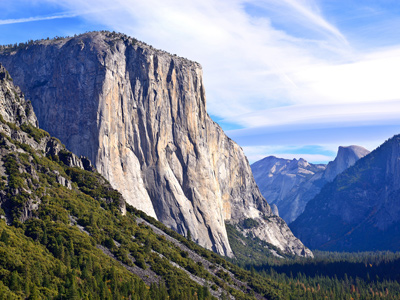
Ask the AI Tutor
Need help with Classifying Rocks and the Rock Cycle? Ask our AI Tutor!
AI Tutor - Lucy
Connecting with Tutor...
Please wait while we establish connection

How many types of rock can you name?
Classifying Rocks and the Rock Cycle
Rocks are not fixed forever. In this GCSE Geography quiz you will explore how rocks form, break down, and change type through the rock cycle.
1 .
Which of the following statements about the rock cycle is not true?
All rocks can undergo weathering and erosion to form sedimentary rocks
Igneous rocks are formed when other rocks are melted and then solidified
Metamorphic rocks are formed by heat and pressure
Metamorphic rocks are the end product of the rock cycle
Any rock can be changed into any other type of rock during the rock cycle
2 .
Which type of rock can become an igneous rock?
Igneous
Metamorphic
Sedimentary
Any
Any rock, if it is melted and then solidified, becomes an igneous rock
3 .
Which of the following is a property of a metamorphic rock?
Porous
Soft and easily eroded
Formed because of enormously high temperature and pressure
Made by the action of flowing water
They are usually very resistant to weathering and erosion
4 .
Which of the following describes weathering?
The breaking down of rocks where they are found
The breaking down of rocks during transport
Rain falling on a piece of rock
A rock dissolving in acid
The last two alternatives could be a part of weathering, the full description is the first answer
5 .
Sedimentary rocks are formed ...
in volcanoes
deep under mountain ranges
on the sea bed
on the side of a mountain
They can also be formed on the beds of lakes or other places where the flow of water is very slow and there are even sedimentary rocks that have formed from sand in deserts!
6 .
Rocks that are formed from lava are called ...
intrusive igneous rocks
extrusive igneous rocks
magma
metamorphosed sedimentary rocks
Extrusive rocks are formed at the surface of the Earth
7 .
How are metamorphic rocks formed?
By melting other rocks
By heating and compressing other rocks
By cooling other rocks
By dissolving other rocks
Some metamorphic rocks are formed mainly by the pressure caused by being deeply buried. Others are formed mainly by the heat from nearby molten magma and some are formed equally from the heat and pressure of being buried deep in the Earth
8 .
Where do metamorphic rocks form?
Under mountain ranges
On the beds of seas and lakes
At the sea shore
In volcanic craters at the surface of the Earth
The temperatures and pressures needed to make most metamorphic rocks are only found where plates are colliding. The greatest pressures and temperatures are found under mountain ranges but there are exceptions to this, e.g. marble can be formed well away from plate boundaries
9 .
Rocks that are made from small particles formed by weathering and erosion are ...
igneous rocks
sedimentary rocks
metamorphic rocks
mud
Weathering and erosion is a constant but very slow process
10 .
Magma is ...
solid rock
liquid rock
gaseous rock
a mixture of all three rock types
Some students confuse magma and lava. Lava is a word used to describe magma that has flowed out onto the surface of the Earth
**Unlimited Quizzes Await You! 🚀**
Hey there, quiz champ! 🌟 You've already tackled today's free questions.
Ready for more?
Ready for more?
🔓 Unlock UNLIMITED Quizzes and challenge yourself every day. But that's
not all...
not all...
🔥 As a Subscriber you can join our thrilling "Daily Streak" against other
quizzers. Try to win a coveted spot on our Hall of Fame Page.
quizzers. Try to win a coveted spot on our Hall of Fame Page.
Don't miss out! Join us now and keep the fun rolling. 🎉
**Unlimited Quizzes Await You! 🚀**
Hey there, quiz champ! 🌟 You've already tackled today's free questions. Ready for more?
🔓 Unlock UNLIMITED Quizzes and challenge yourself every day. But that's not all...
🔥 As a Subscriber you can join our thrilling "Daily Streak" against other quizzers. Try to win a coveted spot on our Hall of Fame Page.
Don't miss out! Join us now and keep the fun rolling. 🎉






